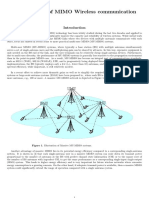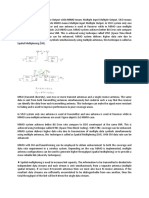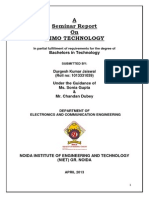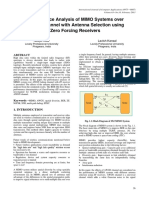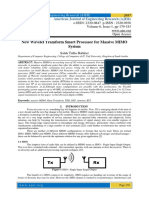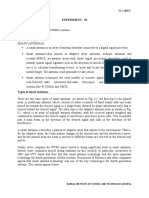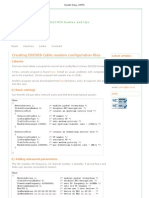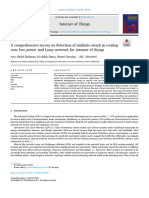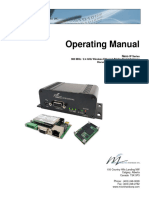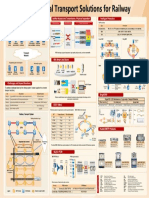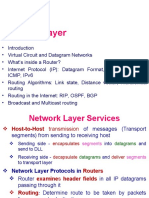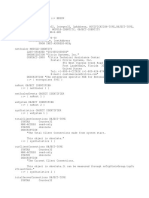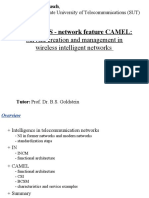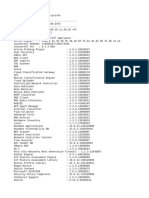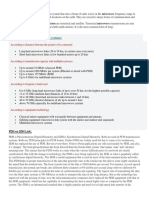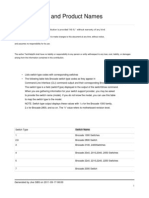0% found this document useful (0 votes)
5 views24 pagesUnit 4
The document provides an overview of MIMO (Multiple-Input Multiple-Output) wireless systems, highlighting its significance in enhancing link capacity, spectral efficiency, and link reliability in modern communication technologies like Wi-Fi and LTE. It explains various MIMO configurations (SISO, SIMO, MISO, MIMO), diversity modes, and techniques such as spatial multiplexing and beamforming, which improve data transmission and reception. Additionally, it discusses the advantages of MIMO systems, including better signal strength, higher throughput, and reduced data loss.
Uploaded by
busireddy072025Copyright
© © All Rights Reserved
We take content rights seriously. If you suspect this is your content, claim it here.
Available Formats
Download as PDF, TXT or read online on Scribd
0% found this document useful (0 votes)
5 views24 pagesUnit 4
The document provides an overview of MIMO (Multiple-Input Multiple-Output) wireless systems, highlighting its significance in enhancing link capacity, spectral efficiency, and link reliability in modern communication technologies like Wi-Fi and LTE. It explains various MIMO configurations (SISO, SIMO, MISO, MIMO), diversity modes, and techniques such as spatial multiplexing and beamforming, which improve data transmission and reception. Additionally, it discusses the advantages of MIMO systems, including better signal strength, higher throughput, and reduced data loss.
Uploaded by
busireddy072025Copyright
© © All Rights Reserved
We take content rights seriously. If you suspect this is your content, claim it here.
Available Formats
Download as PDF, TXT or read online on Scribd
/ 24










